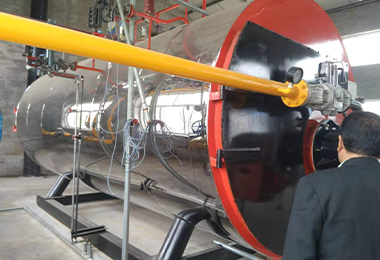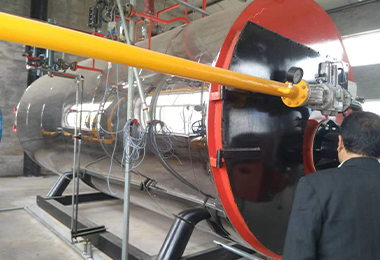
Jan . 14, 2025 11:09 Back to list
Oil-fired hot water boiler
Adjusting the temperature settings of your hot water boiler is crucial for both maximizing efficiency and ensuring safety. Understanding how to set your boiler temperature correctly is important, especially in an age where energy efficiency and sustainability are paramount. This guide explores optimal boiler temperature settings, informed by expertise, experience, and authoritative insights.
Trustworthiness lies in testimonials and field studies that frequently underline regular maintenance as fundamental for optimal performance. Regular checks ensure that the boiler’s settings remain efficient and that both thermostats and pressure valves function correctly. Experienced professionals advise configuring an annual tune-up to calibrate controls, inspect heat exchangers, and confirm that temperature settings are optimized. Lastly, innovations like smart thermostats are revolutionizing boiler temperature management. Such devices equip homeowners with enhanced control over their heating systems, offering the flexibility to adjust settings remotely. By analyzing patterns in occupancy and weather forecasts, smart thermostats adjust boiler temperatures dynamically, contributing to both comfort and cost savings. In summary, the strategic adjustment of your hot water boiler’s temperature settings is a blend of expert knowledge, energy efficiency, and safety awareness. Striving for the ideal temperature not only transforms your heating system into an efficient machine but also contributes positively to sustainable energy consumption and extends the operational life of your boiler. By following these insightful guidelines, you can confidently optimize your home’s heating efficiency and safety.


Trustworthiness lies in testimonials and field studies that frequently underline regular maintenance as fundamental for optimal performance. Regular checks ensure that the boiler’s settings remain efficient and that both thermostats and pressure valves function correctly. Experienced professionals advise configuring an annual tune-up to calibrate controls, inspect heat exchangers, and confirm that temperature settings are optimized. Lastly, innovations like smart thermostats are revolutionizing boiler temperature management. Such devices equip homeowners with enhanced control over their heating systems, offering the flexibility to adjust settings remotely. By analyzing patterns in occupancy and weather forecasts, smart thermostats adjust boiler temperatures dynamically, contributing to both comfort and cost savings. In summary, the strategic adjustment of your hot water boiler’s temperature settings is a blend of expert knowledge, energy efficiency, and safety awareness. Striving for the ideal temperature not only transforms your heating system into an efficient machine but also contributes positively to sustainable energy consumption and extends the operational life of your boiler. By following these insightful guidelines, you can confidently optimize your home’s heating efficiency and safety.
Share
Latest News
-
High-Efficiency Commercial Oil Fired Steam Boiler for Industry
NewsJul.30,2025
-
High-Efficiency Biomass Fired Thermal Oil Boiler Solutions
NewsJul.30,2025
-
High Efficiency Gas Fired Thermal Oil Boiler for Industrial Heating
NewsJul.29,2025
-
High-Efficiency Gas Fired Hot Water Boiler for Sale – Reliable & Affordable
NewsJul.29,2025
-
High Efficiency Biomass Fired Hot Water Boiler for Industrial and Commercial Use
NewsJul.29,2025
-
High-Efficiency Biomass Fired Hot Water Boiler for Industrial Use
NewsJul.28,2025
Related PRODUCTS
Copyright © 2025 HEBEI HONGZE BOILER MANUFACTURING CO., LTD. All Rights Reserved. Sitemap | Privacy Policy






















